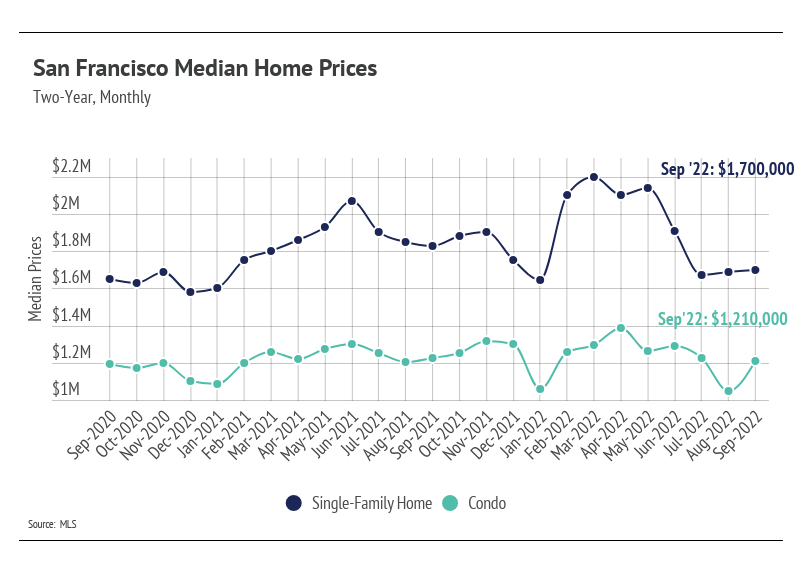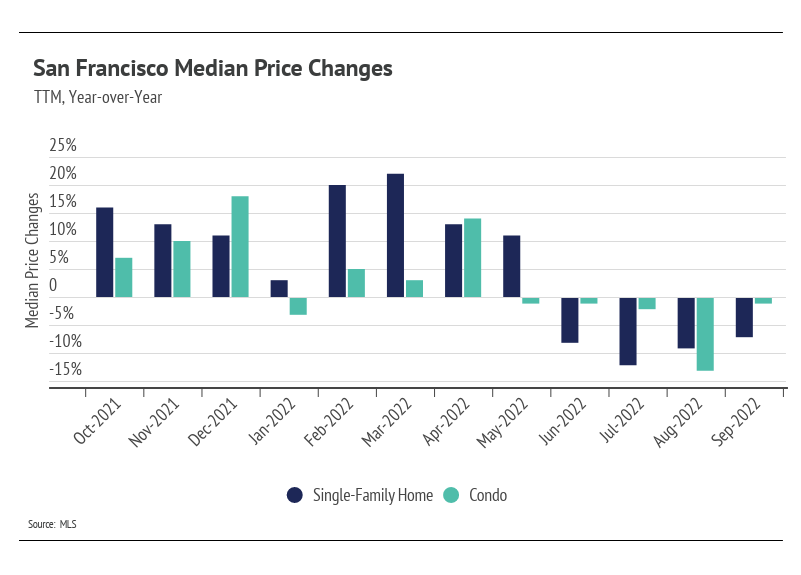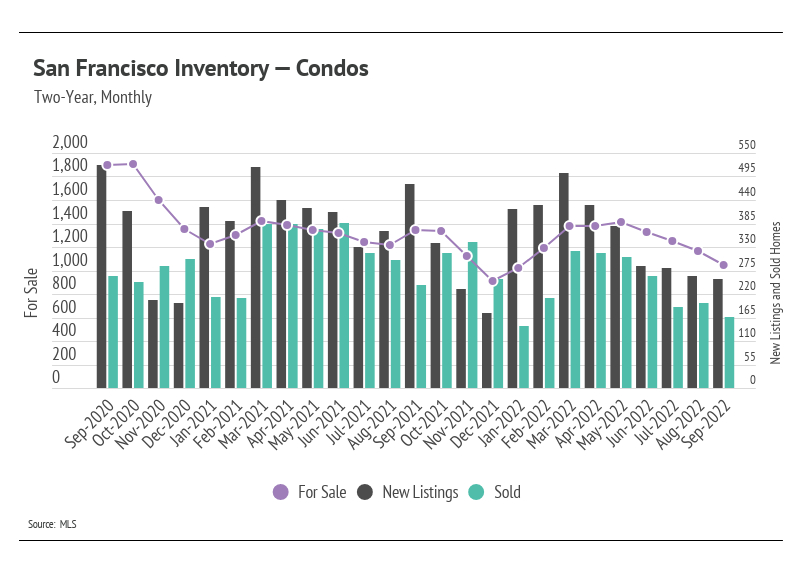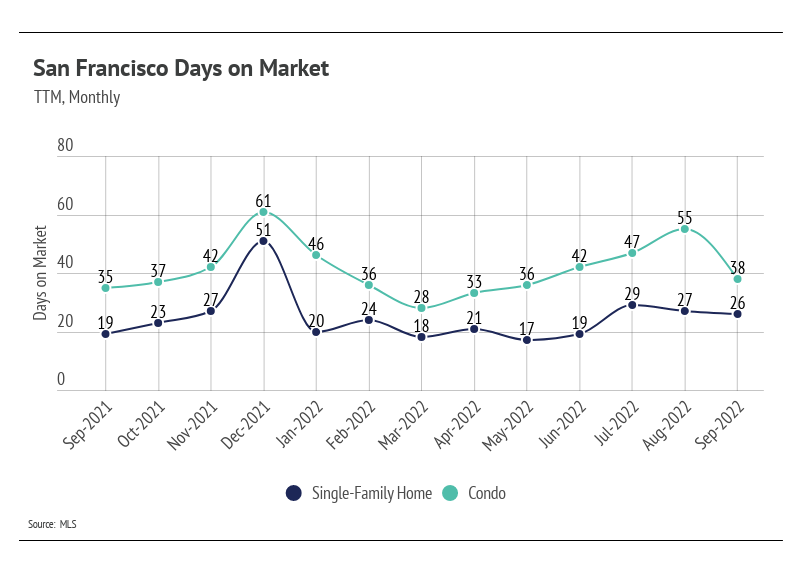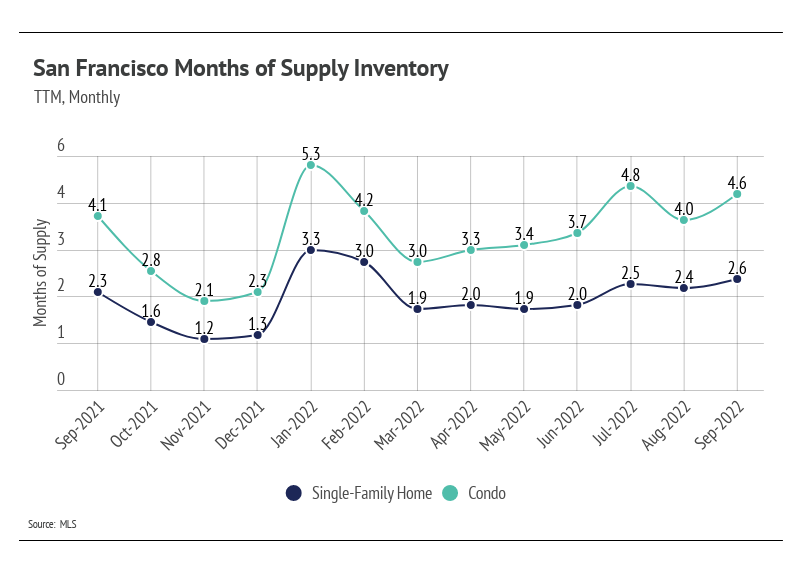Our team is committed to continuing to serve all your real estate needs while incorporating safety protocol to protect all of our loved ones.
In addition, as your local real estate experts, we feel it’s our duty to give you, our valued client, all the information you need to better understand our local real estate market. Whether you’re buying or selling, we want to make sure you have the best, most pertinent information, so we’ve put together this monthly analysis breaking down specifics about the market.
As we all navigate this together, please don’t hesitate to reach out to us with any questions or concerns. We’re here to support you.
- J. Ramon Estevez, DRE# 01409916
The Big Story
The Landscape has Changed
Quick Take:
-
Fewer homes are coming to market, and demand for homes has cooled as interest rates jump to a 15-year high, indicating a short-term equilibrium after two years of rapidly falling inventory.
-
Economic concerns drive buying and selling decisions as inflation remains elevated and the continued Fed monetary policy brings us closer to a recession.
-
Supply of homes will continue to shape the market, and new construction will continue to decline with fewer buyers in the market and high costs to build.
Note: You can find the charts & graphs for the Big Story at the end of the following section.
--------
Housing Market Hits the Brakes
We don’t love to make outright predictions, but enough data has been released to suggest that home prices peaked nationally in June 2022, and we likely won’t see another peak this year. Of course, there will be deviations in local markets, but the larger trend is clear: Home prices cannot sustain the growth rate we’ve seen over the past two years.
The Fed provided huge incentives to buy homes as part of its easy monetary policy during the pandemic by purchasing Mortgage-Backed Securities (MBS) and dropping interest rates. MBS play an integral role in home financing by allowing banks to bundle and sell mortgage loans, thereby turning the bank into an intermediary between the financier and financial markets (investors). Banks get some fees, and investors, rather than the bank, get the interest from the bundle of mortgages, so in many ways, the bank facilitates the loan but investors are the ones really lending the buyer the money. The Fed was a huge investor in 2020 and 2021, doubling its MBS holdings to $2.7 trillion. However, the Fed isn’t buying any more MBS and, in fact, would like to sell — but can’t do so without taking huge losses. Additionally, mortgage rates have jumped dramatically in 2022, more than doubling, which shines a light on just how unique 2021 was for homebuying.
Last September, the average 30-year mortgage rate was 3.01%, meaning that a $500,000 loan would cost $2,100 per month. (That same loan now costs $3,200 per month at 6.70%.) Because the interest rate has such an outsized impact on the affordability of a home, more buyers entered the market, dropping inventory like never before. It was a great time to finance a home, and those buyers who had a down payment rightfully bought even as prices were increasing, since home prices typically continue to increase. This is actually a newer phenomenon, but one that isn’t going away. Since the mid-1990s, home prices began to move more like risk assets (stocks, bonds, commodities, etc.), which marked a huge change from the preceding 100 years. From 1890 to 1990, inflation-adjusted home prices rose only 12%, which is hard to imagine with the massive price growth, up 70% nationally, that we’ve seen over the past 10 years.
Demand for homes has declined over the past three months, which, besides the rate increase, is the seasonal norm. Because home sellers are often buying as they sell, new listings have dropped as well, causing inventory to decline. Inventory is still historically low and will be the one major buoy for home prices. The market has shifted to softening demand and softening supply. Mortgage applications are down 29% year-over-year according to the Mortgage Bankers Association. This, too, isn’t terribly surprising. Generally, homes aren’t bought and sold over and over in short time frames. The high number of sales in 2021 indicates fewer sales in 2022, especially because the buying incentives in 2021 are no longer in place. We can finally say that the market is cooling, but after the hottest two years since the mid-2000s, cooling indicates a healthier market.
The U.S. housing market has become more nuanced over the past several months and depends more than ever on the region. Some parts of the country are trending closer to balance, while some are moving deeper into a seller’s market. Take a look below at the Local Lowdown for in-depth coverage of your area. As always, we will continue to monitor the housing and economic markets to best guide you in buying or selling your home.
--------
Big Story Data





--------
The Local Lowdown
Quick Take:
-
The San Francisco housing market is cooling after reaching all-time-high prices earlier this year.
-
Sales and new listings are on the decline, continuing the two-year downward trend in active listings. Softening demand, however, is alleviating some of the pressure of tight supply.
-
Months of Supply Inventory indicates that the market is trending toward more balance between buyers and sellers.
Note: You can find the charts/graphs for the Local Lowdown at the end of this section.
--------
Price contraction after rapid growth is normal
When we consider the increases in mortgage rates and normal seasonal trends this time of year, when prices tend to stagnate or decline slightly, the price contractions that single-family homes experienced in the second half of this year aren’t alarming. Yes, we are moving into a new chapter in the housing market that doesn’t involve astronomical price increases and 20 offers the first day the home gets listed, but that’s actually a good thing. Single-family home prices in San Francisco grew considerably in 2021 and the first half of 2022, and a contraction is a normal response to that sort of growth. We are now entering a stage of slower growth — but still growth. Real estate has shown itself to be one of the best investments in recent history and is, on average, the largest store of wealth for an individual or family. Price appreciation will likely move to a more normal growth rate of around 5-6% in the coming years.
--------
Fall sales slowdown
Single-family home and condo sales declined month-over-month, along with fewer new listings coming to market. This caused inventory to decline in San Francisco, a trend that will likely continue through the rest of the year. San Francisco, along with the rest of the country, has not returned to pre-pandemic inventory levels. Homes have generally sold faster over the past two years, making new listings more and more important to the market. Inventory generally grows when new listings increase or homes sit on the market. With rates rising at such a rapid pace, new listings are slowing considerably, having dropped 25% from the second quarter of 2022 to the third. Last year, they only dropped 5%. We can tie new listings not only to supply, but to demand as well, because sellers are often buying, too. Softening demand has brought the market closer to balance despite low inventory.
--------
Months of Supply Inventory trends toward a balanced market for single-family homes
Months of Supply Inventory (MSI) quantifies the supply/demand relationship by measuring how many months it would take for all current homes listed on the market to sell at the current rate of sales. The long-term average MSI is around three months in California, which indicates a balanced market. An MSI lower than three indicates that there are more buyers than sellers on the market (meaning it’s a sellers’ market), while a higher MSI indicates there are more sellers than buyers (meaning it’s a buyers’ market). MSI has drifted higher (toward balance) over the past six months but remained below three months of supply for single-family homes, indicating we are still in a sellers’ market. Condo MSI, however, has remained above three for six months, implying the market favors buyers.
--------
Local Lowdown Data
